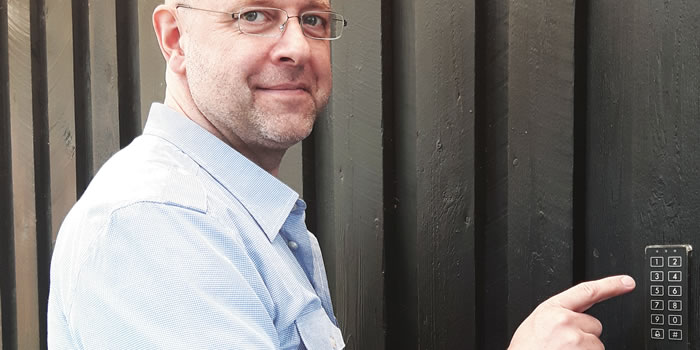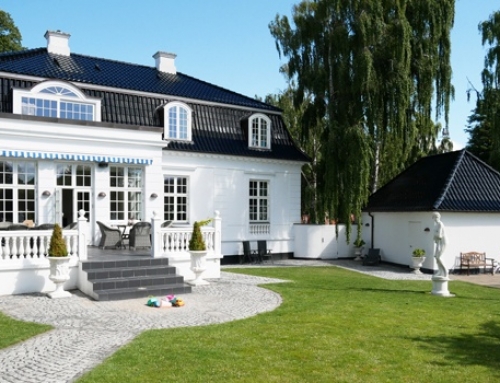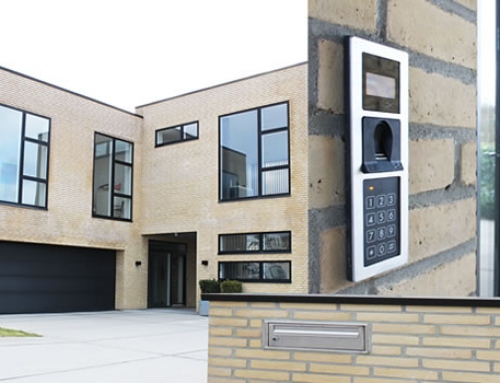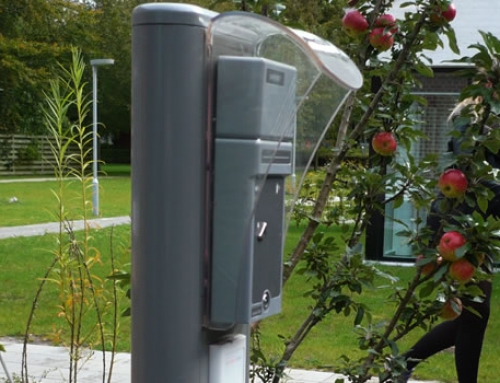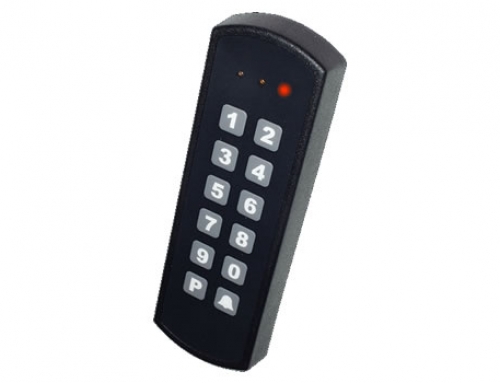First, you need an idea. And they had one – the small group of Danes from North Jutland, who early in the 90s decided to challenge the major players in the market for access control. An idea and wanting to work for it.
CT2000 in the year 1993
We had a notion that the bypass couplers that were available in the market at the time could be improved substantially. First of all, they needed to be smaller and smarter, and then we wanted the keys to have a capacitive touch. That really was the essence of the project,” says Ejner Hansen, who is still a director at Conlan today.
On a Saturday in the summer of 1993, Conlan started a co-operation with Alarm System in order to design the new code keypad. The first sod was cut at a meeting between Ejner and Flemming Ravn and Bjørn-Erik Jørgensen from Alarm System.
There, they had made this keypad, which had some of the technology but lacked all the background in order to be used in the alarm systems industry as a bypass coupler
says Flemming Ravn, who was responsible for the development of fuses at Alarm System at the time.
Flemming Ravn, among other things, participated in the project by designing a new keypad for bypass couplers, as the existing products in the market did not fulfil the wishes of the customers of Alarm Systems with respect to design and functionality.
At the time, there were two in the market, and their products were bulky. They were big and fat, and the keys were prone to wear. Therefore, we saw that there were a few opportunities for this keypad, because there wasn’t any mechanical scanning and instead, it had capacitive scanning,
says Flemming.
Design and Functionality
From the start, during the development process, the focus was on a significantly different design compared to the existing products in the market.
At the time, we already recognised the trend that the users wanted the installations to look nice, too
says Ejner Hansen.
Therefore, one of the first steps consisted of determining the dimensions of the unit – and next, to find the space for the internal technology.
We decided to use the long 2×6 key format, so that it could be installed on a door frame,
says Flemming.
It was a very free process, where we were allowed to be creative and spent very little time on development documentation. That was probably one of the reasons for the success.
Summer and Sun
As always, when you start a new project, there were also a few surprises in the CT2000 project that the participants from Conlan and Alarm System had not expected. The first surprise turned up when it became summer and hot.
When it was really hot, the users noticed that the sabotage alarm suddenly started. When a cloud moved in front of the sun, the system worked again, and we simply couldn’t find out why
says Flemming.
We found out that the error made the cast iron bulge a little so that the small sabotage contact was released and started the alarm. But it took us a little time to find out about that. After all, you couldn’t see it.
Black and White
At the same time, when the code keyboard went into sales, the group also developed the proximity reader in the same series – and here, they met with funny challenges.
We had this proximity reader, which worked fine when it was installed on white paint. But when we installed it on black paint, it suddenly stopped working. So we removed it from the black paint, and it started working again. In the same way, it worked fine with a white front label, but not with the black one. So how could this be? They were absolutely similar apart from the paint. We wondered at great deal about that,
says Flemming Ravn.
We found out that the problem was due to the content of carbon in the black paint, which disturbed the signals.
Then we had a few tests, where we put in some ferrite together with the coil. And that ferrite plate is still sitting there today, which is also the reason why we don’t have a reading problem when the reader is installed on metal.
A Durable Classic
They had an idea – the North Jutlanders – and the fact was, it was probably one of the better ideas. Today – more than 20 years later – the CT2000 is still produced at Conlan. The teething trouble has been overcome a long time ago, and the keypad is still used as a bypass coupler and for a number of other purposes, where the flexible software comes into its own. The design and the features are still exactly the same as when the product was launched in the early 90s.
According to Flemming Ravn, it was especially the design of the reader with its many features and combinations which ensured that it had a solid position in the marked directly from the start.
That was the reason why we beat the two competitors who existed at the time. Because it was so small because it had such a smart design compared to the existing products in the market.
Today, the aesthetic design is still one of the major aspects in Conlan’s development of new products. This can among other things be seen in the newer product line, Mykey, which fits a Fuga frame as module 1 or 1½. Time will show, whether this idea is durable as the one, they had 25 years ago.
